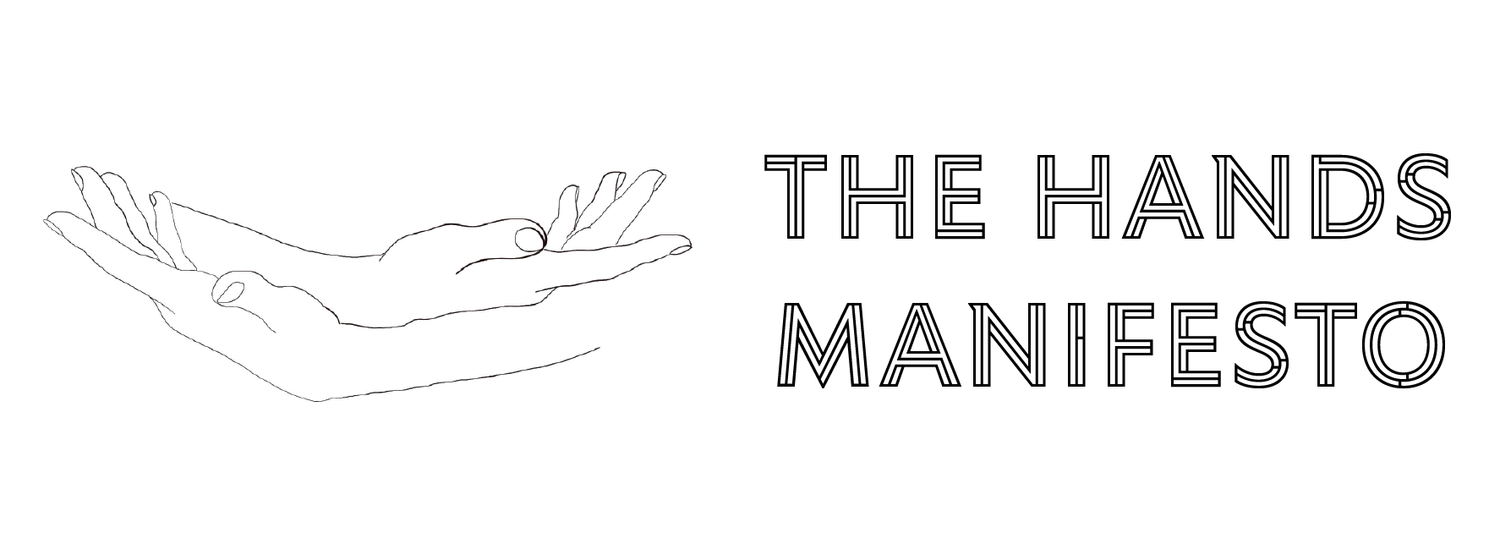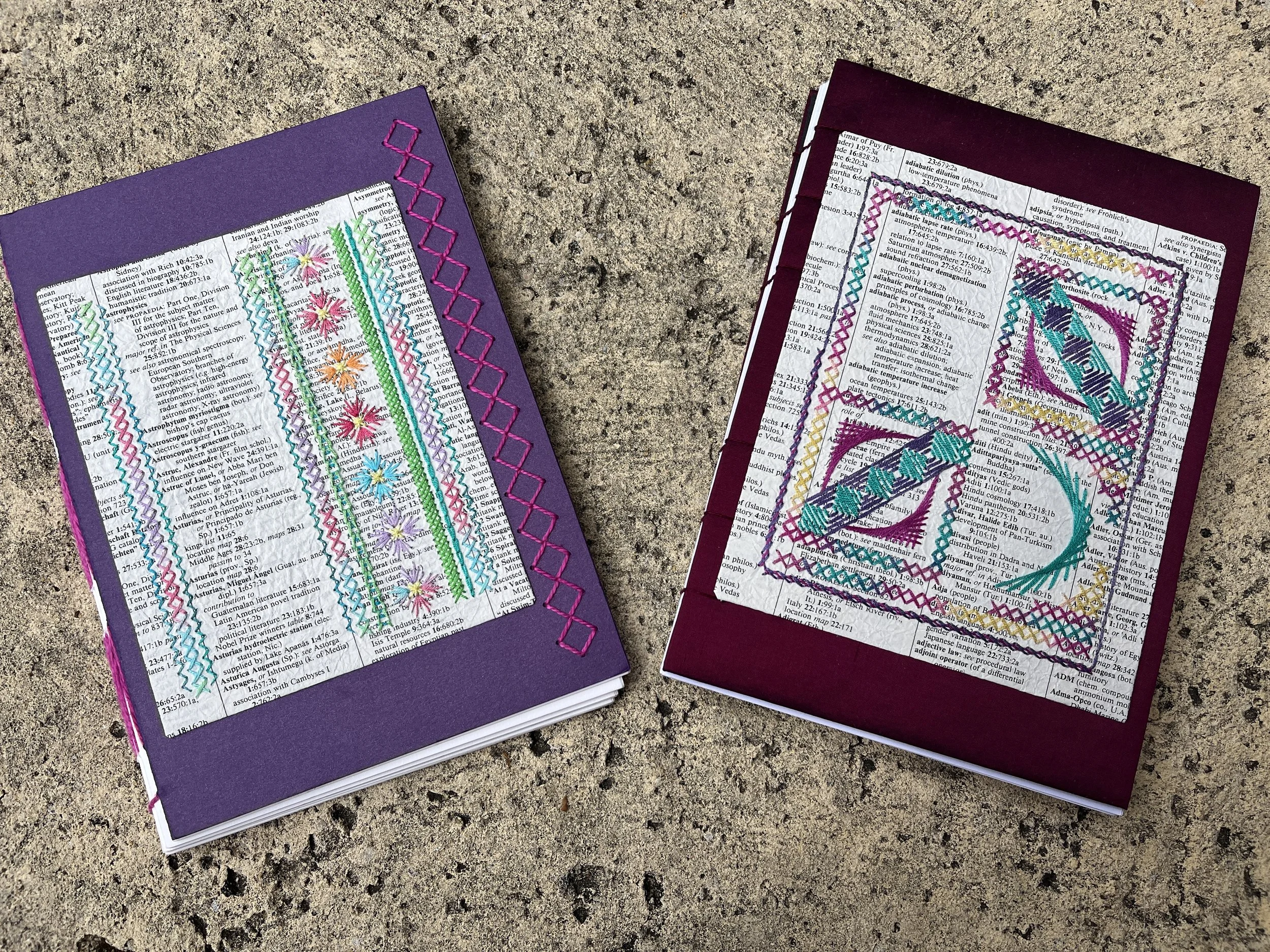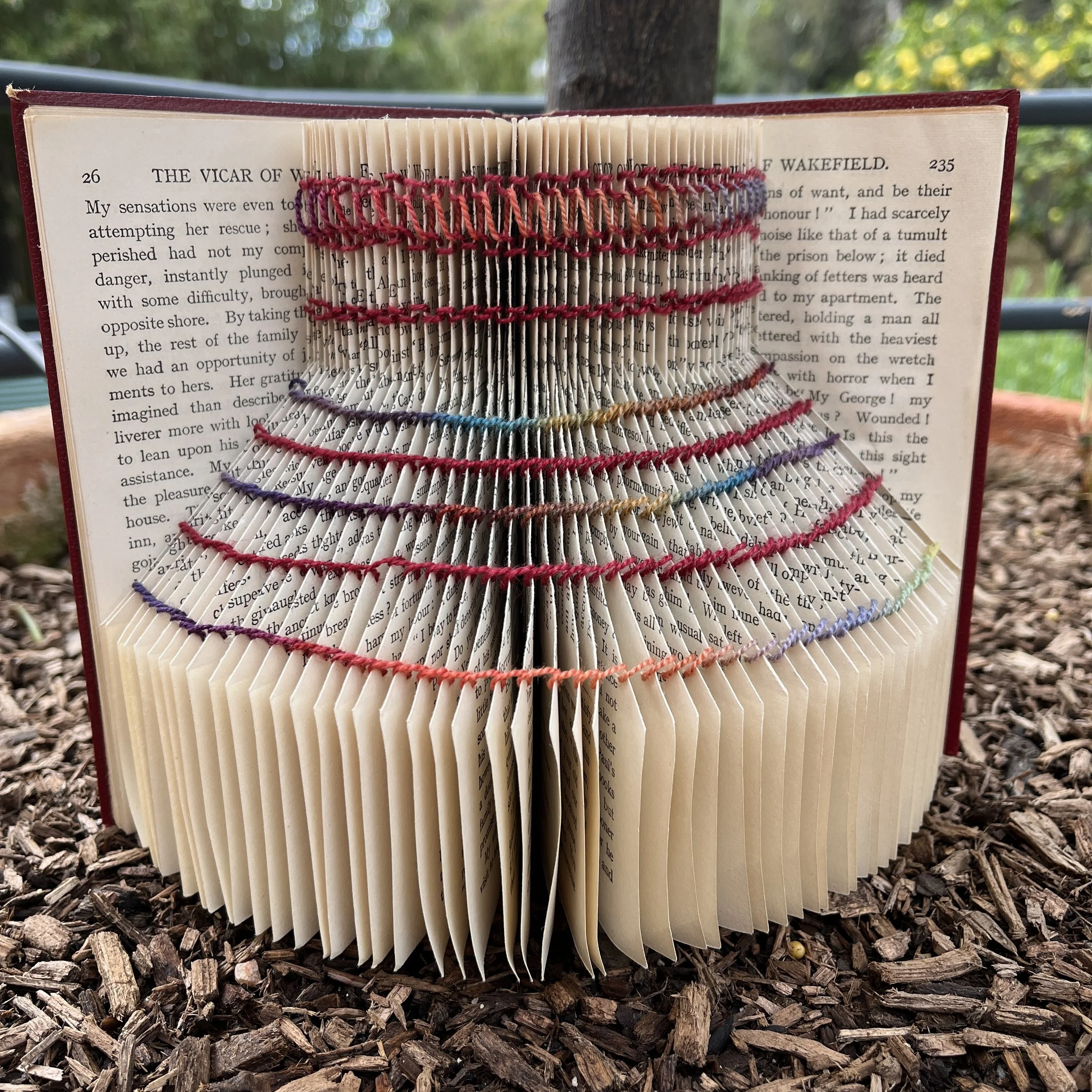Moving things around until they feel right
A friend sent me a beautiful Instagram reel recently. It features Milton Glaser, a celebrated US graphic designer, talking about his creative process. I did a bit of digging and found that the reel is actually based on a series of videos titled “On Creativity”. These are the words that really landed with me.
“Someone asked me the other day what I do all day. I said I move things around until they look right.”
I love that someone of Glaser’s stature and experience can frame his huge body of work into such a powerfully simple connection with process. The videos go on to share his ideas around how much you learn by doing the work of being an artist. There is no shortcut through the process - you just have to do the work.
Which got me thinking about my own relationship to the word "art" and the part of my identity that I sometimes refer to as an "embroidery artist".
I went to a school reunion recently - the very first I had ever attended. I was nervous about reconnecting with a group of people whom I hadn’t seen for decades, and some who really hadn’t made school life easy. I'm happy to report that it was a much, much better experience than I expected. And of course, one of the things about such events is that it brings back memories that have lain long forgotten. In my case two art teachers - a woman who I remembered very clearly and a man who I'd completely forgotten. The female art teacher was memorable for two reasons. First, she encouraged me to spend one term of art with her working on an embroidery project. It was so lovely to be able to do something that I loved in a space where I usually felt woefully inadequate. But second, she was also the teacher that told me that my handmade cross-stitch bookmark gift one Christmas had been done "wrong" because the crosses weren't all going the same way. I am absolutely certain she would never have wanted me to hold onto that message for quite as long as I did, but for an academic type with perfectionist tendencies, it stuck. I just wasn’t very good at "art".
The male teacher was in outward appearances a classic stereotype - tall, slim, wiry build with a shock of unruly hair. And his art teaching was all bold strokes, letting yourself go, looking beyond the literal. I was frankly useless at all of it. And the fact that I had completely forgotten him only goes to prove that we really didn’t have any connection. Sadly, art classes with him had left no lasting impression on me at all. But the gap in my memory really got me thinking. If either of these teachers remembered me (which I doubt), would they be surprised to know that I have spent over a decade working professionally as a creative. And what would they think of my work? Is it artistic enough? And what does that even mean?
This of course is a long running debate in academic and artistic circles. What is art? What is craft? And why do we even care? I've written about that debate before, and I don't want to get stuck in the weeds of definitions here. Instead, let's forget about external judgements or qualifications or categories and make the story more personal. From where I stand now, it feels more like a spectrum - one that we are free to dip in and out of depending on myriad factors.
The spectrum to me looks something like maker-creator-artist. You can think of it as a loose reflection on the depth to which we choose to engage with a creative making practice. I want to be very clear here that more depth does not mean more value or somehow "better". It's just a different way of working - all linked with Milton Glaser's premise. Perhaps the best way to illustrate this idea is with my own personal experience. I have spent decades committing to the simple repetition of “needle up, needle down” to play with patterns until they look right. And over that time I can clearly identify phases where I have been more deeply engaged with different parts of the spectrum. You can almost certainly do the same when you reflect on your own creative journey.
I started out as a maker. From childhood right through to my mid-30s I made lots of different things - imitating other people's work by following patterns in embroidery, knitting, crochet, scrapbooking, etc. This was a really important phase because it's where I experimented with lots of different crafts, honed my skills, gained some understanding of the materials, and discovered the kind of work I like to do the most. The joy in this phase of my creative joy was in making things that I could use for myself and gift to others. And it's a mode that I return to regularly. Knitting and wearing a handmade scarf is still one of my favourite things to do.
Then when I started the Masterclass in Canvaswork Embroidery in 2007, I was pushed in a new direction. I had to become a designer- somebody who could take all that maker knowledge and start transforming nebulous ideas into concrete projects. With a goodly mixture of stumbles and wins, that process soon became addictive, and I've been doing it ever since. During this phase, I considered myself an experienced maker and an emerging creative. My work was a mixture of the two - trying to bring new ideas to life, but always working from the foundation of my maker skills and experience.
Since I started my business, I've gradually become more comfortable with referring to myself as an embroidery artist, especially because I strongly believe that embroidery is an art form. It was relegated to something less than art by an establishment that valued painting as "high art" and textile art as "women's work", despite the fact that both are identical in essentials - a form of mark making that imparts meaning in visual and tactile form. Given that, I still haven't been sure about my own artistic voice. Mostly I created work for the sheer love of the geometry and colours that I could combine in endless combinations. If it had a story, it was simply that it was a visual representation of my lifelong love affair with pattern and mathematics.
And then a few weeks ago, a whole new window opened almost instantaneously in my mind. I was visiting the exhibition "Paper Universe" at the State Library of NSW. I've always loved books, and as part of my embroidery practice I've experimented with incorporating words into my designs, as well as creating handmade books as a way to display and use my pieces. But I'd never really thought about deeply integrating my stitching with books. So I even surprised myself by how strongly this idea took hold of me. It felt like my brain had made a leap from an artisanal approach to my embroidery practice to something more freeform and exploratory. But I couldn't really explain why.
Since that light bulb moment in the library, I've been experimenting with a couple of techniques. In the first, I've been deconstructing an old encyclopedia index, layering the pages onto my base fabric, and then stitching through both. It's fun deciding what words to leave uncovered. In the example below, I left the column starting with astrophysics uncovered because my younger self loved astronomy and spent many years dreaming of a career in that field. But there follows a string of totally unrelated entries - a fish genus, a principality in Spain, a Nobel prize winning author. Leaving them uncovered invites curiosity - and a lit bit of awe and wonder at the sheer diversity that can be found by simply listing things in alphabetical order. Maybe like the flowers I have stitched on the page, it can be fun to walk through a meadow and collect such disparate ideas into a bunch and play with the connections you might find.
Early experiments with stitch and encyclopedia pages
The second technique I've tried is folding second hand books in such a way that I can use them as a substitute for fabric on which to stitch. The words are still partially visible, but they are no longer the whole story. The stitching on my first sample is smocking, so it has an elastic quality. This means that you can play with closing the new book form as tightly as possible, thereby temporarily obscuring all the words it contains. Or stretching it wide open and therefore revealing more of the knowledge or story contained within. Maybe having just part of the story available, means that we all have the freedom to develop our unique interpretations based on life experience. The story is no longer rigid, it has some flexibility.
Simple smocking applied to a folded book (with apologies to The Vicar of Wakefield!)
I confess that I am very excited. I'm already experimenting with choosing books based on their content, look and feel, testing how much stitch intricacy the paper can handle, overlaying pages with prints before I stitch. I even found myself carefully folding a book on a recent flight - I can't imagine what my fellow passengers were thinking! But here's what matters most: I realised that these stitched books are visual representations of everything I've been exploring with The Hands Manifesto - my belief that life is about the balance between head work and hand work. In a single stitched page, I'm showing that we are so much more than just the words on the page, that doing linked with learning is far more valuable than the words alone. This creative leap feels deeply personal because it has given me a new way of sharing what I believe with the world.
But I didn't plan this. I couldn't have predicted that decades of "needle up, needle down" would lead me not only to The Hands Manifesto itself, but to creative work that embodies it too. All those years of following other people's patterns, all those experiments with colour and form that were simply about loving pattern for pattern's sake - I thought I understood what they were for. But they surprised me. They had been quietly accumulating into something I didn't yet know I was building. Which brings me back to Milton Glaser and his elegant summary of a lifetime's work: moving things around until they look right. What I love most about that is the faith it requires in trusting your process. Showing up regularly, repeatedly practising and playing, moving things around until they look right - it's all worth something, even when you can't yet see where it's taking you. So wherever you are on your own creative journey - whether you're happily following patterns, beginning to play with your own designs, or deep into work that feels personally meaningful - I hope you'll pause and marvel at what you've already built. Because your own version of "needle up, needle down" is crafting a resource that is simply wonderful, and one day it might just prompt an insight that will surprise you too. And how exciting is that!
How to comment
I love receiving your comments and hearing your ideas! Making a comment is easy. Just type it into the box below. If you test it with “Preview” first, the name field will show “Not Logged In” (which is a system thing I can’t change). Never fear though! When you click on “Post Comment”, a dialogue box will come up asking for your Name, Email, and Website URL. The only field that must be completed is “Name”. It can be anything you choose - full name, first name, initials, nickname. So go ahead. Let me know what you think :)


